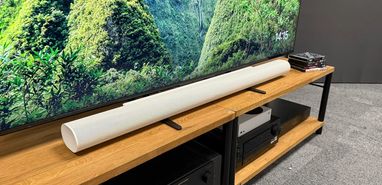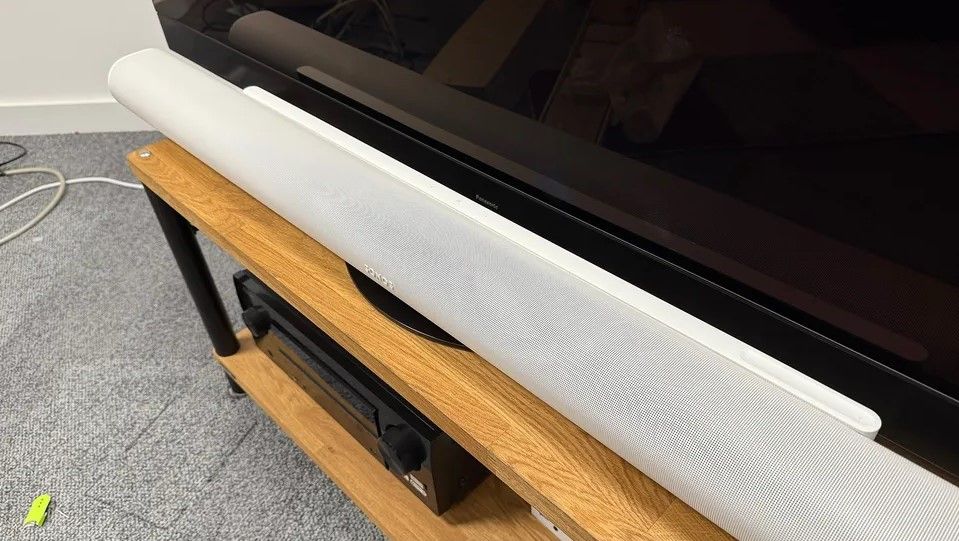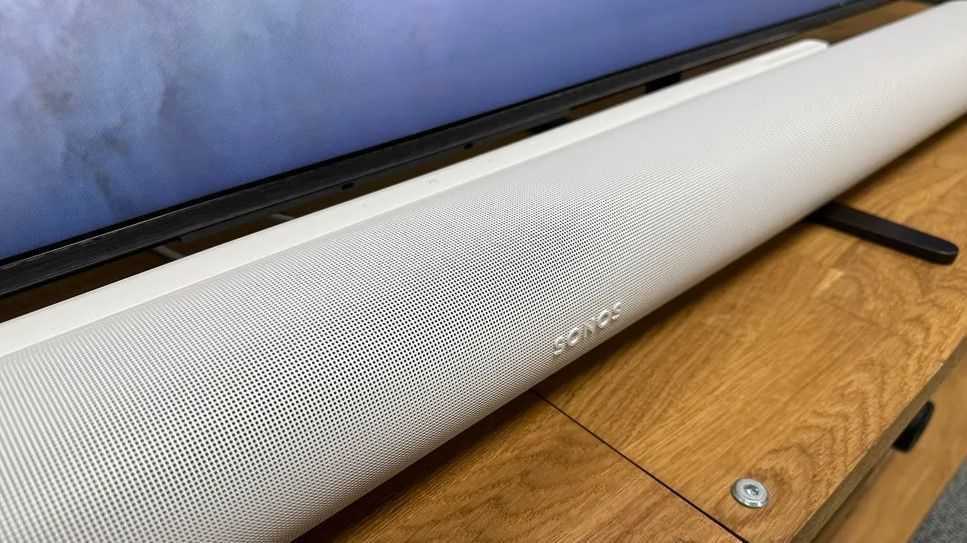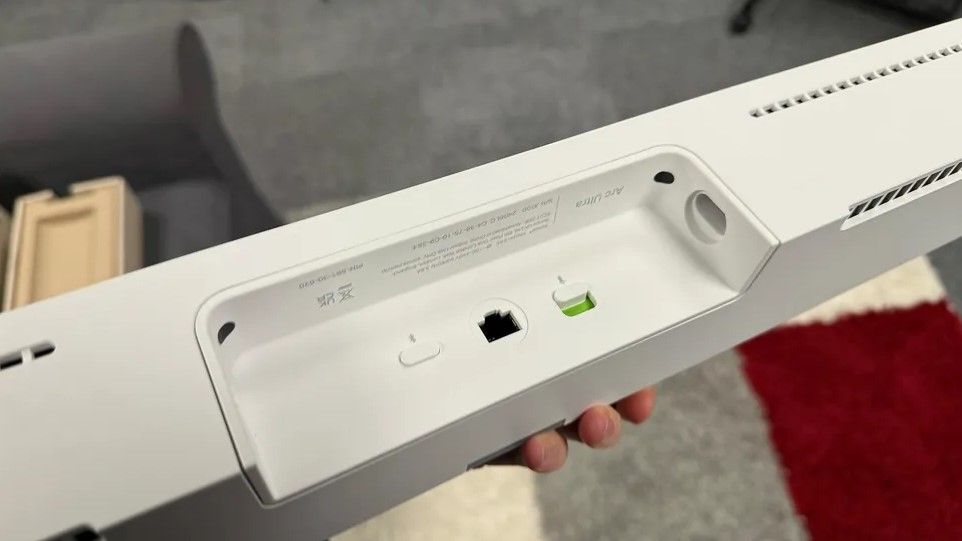
As a long-time user of the original Sonos Arc, I approached the new Sonos Arc Ultra with both excitement and a bit of skepticism. The original Arc has long been a key component of my home theater setup, providing impressive Dolby Atmos sound and seamless integration with the Sonos ecosystem.
With the Arc Ultra promising upgrades in sound quality, design, and connectivity, I was eager to see if it could live up to the hype and justify its higher price tag. After spending several days testing the Ultra, it’s clear that Sonos hasn’t simply refined their flagship soundbar; they’ve redefined what a standalone audio system can offer. But is it enough to tempt existing Arc users like myself to make the upgrade? Let’s dive in.
What’s New with the Sonos Arc Ultra?
Released on October 29, the Sonos Arc Ultra is Sonos’ latest flagship soundbar, priced at $999, available in black or white. This release marks a slight price increase over its predecessor, the original Arc, which has been discontinued and is now available at discounted rates as retailers clear remaining stock.
The Arc Ultra enters a competitive market, facing off against rivals like the Sony Bravia Theatre Bar 9 and the Samsung HW-Q990D. Both offer compelling features and, at times, significant discounts.
Design and Build: Subtle Changes, Major Impact

Visually, the Arc Ultra closely resembles the original Arc, maintaining Sonos’ minimalist design with a perforated grille covering much of the body. However, there are some noticeable tweaks, such as a new ledge at the back housing touch controls for play/pause, skip, volume slider, and voice control — all previously located on the main grille.
The Arc Ultra is slightly wider (118cm, up from 114cm), but shorter in height (7.5cm, down from 8.7cm), reducing the chance of blocking the TV screen when placed in front. Weighing around 350g less than its predecessor, it’s also more wall-mount friendly.
One thing to note is that the Arc Ultra requires an open placement to perform optimally. Placing it in a corner or under a shelf can obstruct the upward-firing drivers, which are crucial for proper sound dispersion.
Sound Features and Connectivity: More Power and Precision

The Arc Ultra boasts a 9.1.4-channel setup, a major upgrade from the original Arc’s 5.0.2 arrangement. It features 14 custom-designed drivers powered by 15 Class D amplifiers, including seven tweeters, six midrange woofers, and a newly developed Sound Motion woofer. This innovative woofer uses four smaller, lightweight motors to move the cone, which enables more air displacement, delivering up to twice the bass of the original Arc.
Despite these advancements, the Arc Ultra lacks support for DTS formats, focusing solely on Dolby Atmos for spatial audio. Its connectivity options are also somewhat limited, with just a single HDMI eARC port, meaning all external devices must be connected through the TV. This could pose a challenge for users with multiple high-spec gaming devices or limited HDMI 2.1 ports on their TVs.
On the bright side, the Arc Ultra introduces Bluetooth connectivity (a first for Sonos soundbars) and extends Sonos’ excellent Trueplay calibration support to Android devices, increasing user accessibility.
Performance: Clearer Sound, Deeper Bass
The Arc Ultra delivers a clean, precise, and expansive soundstage with remarkable three-dimensionality. The enhanced bass is deep and expressive, offering a strong foundation without overwhelming the entire sound profile. Dialogue clarity has improved, thanks to the new front-firing speaker array dedicated to the center channel, which ensures crisp and intelligible speech.
The soundbar excels in detail retrieval, capturing subtle nuances across a wide range of content. However, the lack of HDMI passthrough and DTS support may be a limitation for some users. Additionally, while the Sonos app provides solid control and customization options, some users have reported occasional connectivity issues that might affect the overall user experience.
How Does the Arc Ultra Compare to Its Competitors?

When compared to competitors like the Sony Bravia Theatre Bar 9 and the Samsung HW-Q990D, the Arc Ultra holds its ground in terms of sound quality and design.
The Sony Bravia Theatre Bar 9, although priced lower, frequently goes on sale, bringing it closer to the Arc Ultra’s price range. It offers HDMI passthrough and supports both Dolby Atmos and DTS:X formats, providing more flexibility for users with multiple content sources.
The Samsung HW-Q990D, while more expensive, comes with a wireless subwoofer and surround speakers, delivering a more immersive surround sound experience right out of the box. Its broader connectivity options, including multiple HDMI inputs, make it a more versatile choice for users seeking a comprehensive home theater setup.
Is the Arc Ultra Worth the Upgrade?
Sonos has often been criticized for its app, which, while sleek and offering solid control options, has suffered from occasional connectivity issues and limited flexibility. Users have reported frustration with delayed updates and difficulty adding new devices. These frustrations are especially disappointing given the premium price of Sonos products, which sets high expectations for seamless integration.
Despite these issues, from a hardware perspective, the Arc Ultra is a major upgrade over its predecessor. It delivers enhanced bass performance, clearer dialogue, and a more immersive soundstage. Its sleek design and expanded connectivity options, including Bluetooth and broader Trueplay support, make it a compelling choice for users seeking a high-quality, all-in-one soundbar solution.
While the lack of HDMI passthrough and DTS support may be a consideration for some potential buyers, the Arc Ultra is still an impressive soundbar that elevates the home audio experience, making it a worthy contender in the premium soundbar market.








By Radoslav Jokic
Updated on 9th March 2025